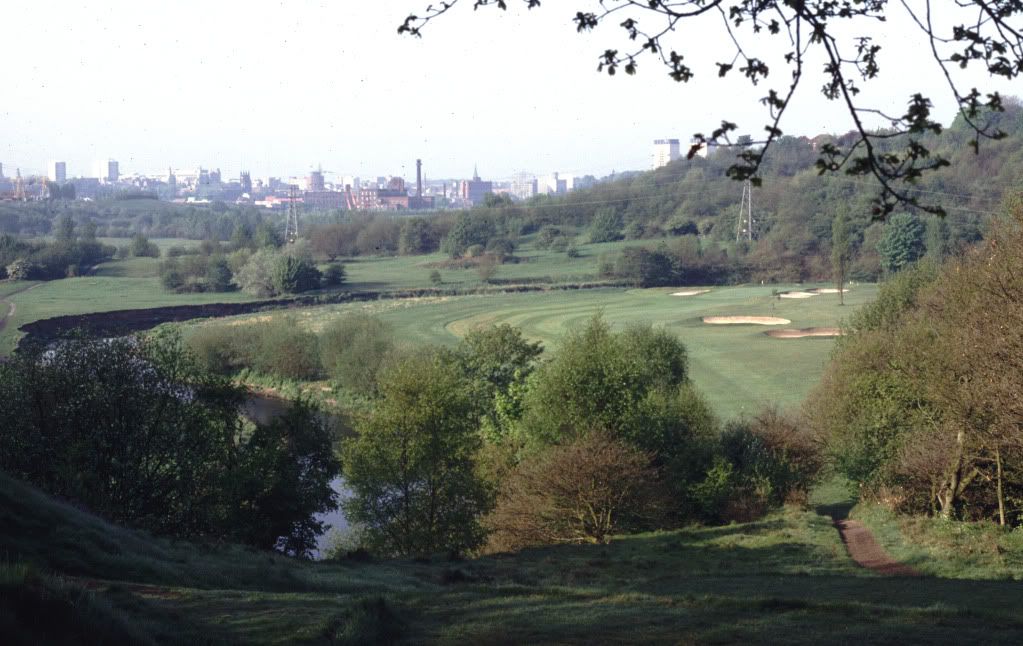I'm sure it's all about aesthetics.
People like to see trees - they are eye candy. An open aspect, whether links, heathland. or parkland, can look a little barren and featureless to the eye of the non golf-purist. Trees were a cheap and easy way to 'beautify' golf courses and fell in with a theme generally fashionable throughout society at the time that more trees were a good thing. British members may remember the officially sanctioned campaign to "Plant a tree in '73"
While we GCAers have concerns about trees interfering with play, trees around the perimeters of courses remain very popular. Beau Desert for example, has a wonderful feeling of seclusion from the real world, being surrounded by dense forest. Photographs from 100 years ago however, reveal that the aspect from the course was completely open, with views of collieries and industial blight. Little wonder that trees were allowed to grow. Reddish Vale offers another example;
14th tee in 1985ish

14th tee in 2011

99.9% of golfers would prefer to see trees than an industrial town. Since the latter photo, the trees actually interfering with the tee-shot have been removed, but those enclosing the course remain.
Chatting to our head green keeper recently, he said that only five trees had ever been deliberately planted on our course. The rest, mainly silver birches and some small oaks, had self-seeded and not been removed in a change of policy dating back to the sixties or seventies. Prior to that, saplings would have been removed as soon as they broke ground - a policy now returned to.
We perhaps need to remember that nature's default position is to cover most landscapes with trees, where conditions allow. Open spaces require the hand of man (or grazing animals) to keep trees in check. In many cases it was the relaxing of this tree management programme that allowed trees to become omnipresent on golf courses, rather than specific planting.